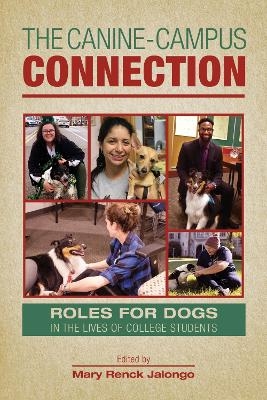
The Canine-Campus Connection
Purdue University Press (Verlag)
978-1-61249-648-1 (ISBN)
A primary mission of universities is promoting student success and well-being. Many college and university personnel have implemented initiatives that offer students the documented benefits of positive human-animal interaction (HAI). Accumulating evidence suggests that assistance dogs, therapy dogs, and shelter dogs can support student wellness and learning. The best programs balance the welfare of humans and canines while assessing students' needs and complying with all laws and regulations. Contributors to this edited volume have drawn upon research across many disciplines as well as their extensive practical experiences to produce a timely and valuable resource - for administrators and students. Whether readers are just getting started or striving to improve well-established programs, The Canine-Campus Connection provides authoritative, evidence-based guidance on bringing college students and canines together in reciprocally beneficial ways.
Part one examines the interactions between postsecondary students and canines by reviewing the literature on the human-canine bond. It establishes what necessarily must be the top priority in canine-assisted activities and therapy: the health and safety of both. Part two highlights four major categories of dogs that students are likely to interact with on and off campus: service dogs, emotional support animals (ESAs), therapy dogs, and homeless dogs. Part three emphasizes ways in which dogs can influence student learning during classes and across aspects of their professional development. Part four considers future directions. Authors take the stance that enriching and enlarging interactions between college students and canines will require university personnel who plan and evaluate events, projects, and programs. The book concludes with the recommendation that colleges and universities move toward more dog-friendly campus cultures.
Mary Renck Jalongo, Ph.D., has written, coauthored, or edited more than thirty books and earned eight national awards for excellence in writing, including four EDPRESS awards. She has published articles and books on humane education, the child/companion animal bond, dog bite prevention, and children reading aloud with therapy dog teams. Currently, she is a tester/observer for the Alliance of Therapy Dogs, and has completed hundreds of visits and presentations with her four therapy dogs since 2006. In collaboration with a state prison, she works with inmates to train service dogs for people with disabilities.
PART ONE: DOGS ON CAMPUS
Introduction: Letting the Dogs In, by Mary Renck Jalongo
1. Transitioning to College Life: Research Evidence of Dogs' Effects on Humans, by Mary-Ann Sontag Bowman and Mary Renck Jalongo
2. Bringing Postsecondary Students Together with Dogs: Dog Welfare, Health, Safety, and Liability Considerations, by Laura Bruneau and Amy Johnson
PART TWO: TYPES OF DOGS
3. Service Dogs: Performing Helpful Tasks for People With Disabilities, by Mary Renck Jalongo
4. Emotional Support Animals: Therapeutic Companions for Students with Disabilities in Campus Housing, by Janet Hoy-Gerlach, Enjie Hall, and Bradley J. Menard
5. Therapy Dogs and Facility Dogs: Supporting Well-Being, by Mary Renck Jalongo and Lorraine J. Guth
6. Shelter Dogs: Service-Learning Projects with Animal Welfare Organizations by Mary Renck Jalongo and Tunde Szecsi
PART THREE: INVOLVING CANINES ACROSS THE DISCIPLINES
7. Increasing Student Engagement: Roles for Dogs in College Courses, by Mary Renck Jalongo and Lorraine J. Guth
8. Meeting Professional Expectations: Practica, Internships, Volunteerism, and Collaborative Research with Faculty, by Jean P. Kirnan and Taylor Scott
PART FOUR: FUTURE DIRECTIONS
9. Evaluating Outcomes: Events, Projects, and Programs Involving Dogs, by Mary Renck Jalongo and Theresa McDevitt
10. Possible Futures: Moving Toward a More Dog-Friendly Campus Culture, by Mary Renck Jalongo
Afterword
Index
| Erscheinungsdatum | 08.04.2021 |
|---|---|
| Reihe/Serie | New Directions in the Human-Animal Bond |
| Zusatzinfo | 55 |
| Verlagsort | West Lafayette |
| Sprache | englisch |
| Maße | 152 x 229 mm |
| Gewicht | 520 g |
| Themenwelt | Sachbuch/Ratgeber ► Natur / Technik ► Tiere / Tierhaltung |
| Sozialwissenschaften ► Pädagogik ► Erwachsenenbildung | |
| ISBN-10 | 1-61249-648-2 / 1612496482 |
| ISBN-13 | 978-1-61249-648-1 / 9781612496481 |
| Zustand | Neuware |
| Haben Sie eine Frage zum Produkt? |
aus dem Bereich


